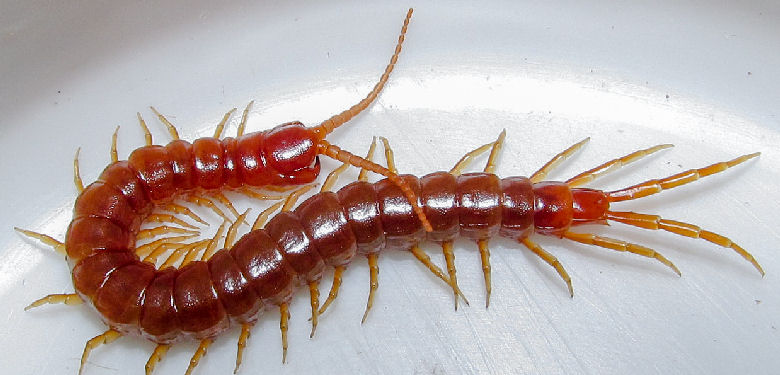126.DOES A CENTIPEDE REALLY HAVE A RED FEET?
Have you ever turned over a flat stone or a rotting log, and seen a little wormlike creature running quickly away from the light? The chances are it was a centipede.
Of course you didn’t actually have a chance to count all its feet to see if it really had a hundred of them! The name “centipede” means “100-footed,” and some species of this creature actually have 100 feet. Some, in fact, even have more legs than that! And some have only 30 legs.
While it seems rather amazing to us that any living thing can have so many feet, such creatures are not as rare in nature as we might think. There is a whole group of animals called “Myriapoda.” This means “many-footed,” and it includes not only the centipedes, but also the millepedes. Can you guess what “millepedes” means? You’re right if you said 1,000-legged! So the centipede is not the champion when it comes to greatest number of legs. Incidentally, this type of creature is one of the oldest in existence. According to scientists, there have been centipedes and millipedes for millions of years!
While some human beings have trouble not stumbling with just two feet, a centipede can manage his hundred or so feet quite easily. The legs are arranged in pairs, and each pair grows out of a segment of the centipede’s body, which is flat and has many joints.
On the section next to the head of the centipede, there are two long feelers and two poison-bearing claws. The poison of most centipedes is harmless to man, but in the tropics there are certain species 20 to 25 centimeters long, whose bite may be serious. Such centipedes have been known to kill small birds!
Centipedes develop from eggs laid in the open. Some kinds are hatched with their full number of legs. Others start with seven pairs and add a new set each time they shed their skin, until they are fullgrown. Centipedes come out at night to hunt their food, and during the day they hide under rocks or in dead wood.



Leave a Reply